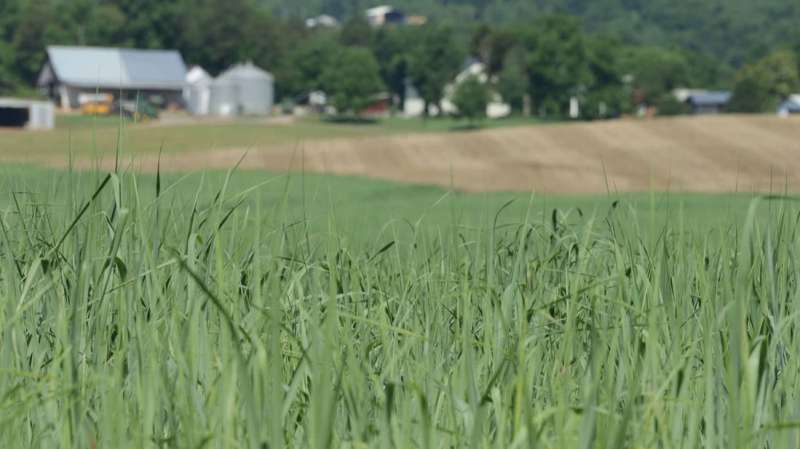A biorefinery could use switchgrass and several other feedstocks sources without having a major impact on the ethanol (fuel) yield. Credit: US Department of Energy
Biorefineries are picky eaters. They only consume one or two types of plant matter. Researchers processed and experimentally measured ethanol production from five different herbaceous feedstocks. They examined two annuals (corn stover and energy sorghum) along with three perennials (switchgrass, miscanthus, and restored prairie). They determined that a lignocellulosic ethanol refinery could use a range of plant types without having a major impact on the amount of ethanol produced per acre, or per land area.
Many biorefineries consume one, or sometimes two, feedstocks grown and harvested nearby. The feedstock contains lignocellulose. That chemical is processed and fermented into biofuels or bioproducts. Accepting a variety of feedstocks could improve the refinery's environmental footprint, economics, and logistics. The team's study showed that a lignocellulosic refinery could be relatively agnostic in terms of the feedstocks used.
Refineries to convert biomass into fuels often rely on just one feedstock. If the refineries could accept more than one feedstock, it would greatly benefit refinery operation. Scientists at the Great Lakes Bioenergy Research Center investigated how five different feedstocks affected process and field-scale ethanol yields. Two annual crops (corn stover and energy sorghum) and three perennial crops (switchgrass, miscanthus, and restored prairie) were pretreated using ammonia fiber expansion, hydrolyzed, and fermented separately using yeast or bacteria.
They found that both biomass quality (chemical composition, moisture content, etc.) and biomass yield affected how much ethanol each acre (or land area) produces. However, the effect differed. Biomass quality was the main driver for the ethanol yields for high-yielding crops, such as switchgrass. Biomass yield was the main driver for the ethanol yields for low‐productivity crops, such as corn stover. Therefore, to increase ethanol yield for high-yielding crops, focusing efforts on improving biomass quality or conversion efficiency may be prudent.
For low-yielding crops, focusing on increasing biomass yield may be the best strategy. When measuring the amount of ethanol produced during fermentation, most feedstocks fell within a similar range, especially when scientists used bacteria to ferment the biomass. In total, the results of this study suggest that a lignocellulosic refinery may use a variety of feedstocks with a range of quality without a major negative impact on field-scale ethanol yields.
More information: Yaoping Zhang et al. Diverse lignocellulosic feedstocks can achieve high field-scale ethanol yields while providing flexibility for the biorefinery and landscape-level environmental benefits, GCB Bioenergy (2018). DOI: 10.1111/gcbb.12533
Journal information: GCB Bioenergy
Provided by US Department of Energy






















